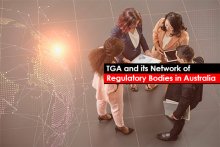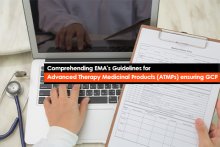Today regulatory terms like eCTD, ASPPs, CANDA, SPL, MAA and NDA to name a few are the buzz words in the world of regulatory compliance. While each terminology indicates the inception of the cutting edge technology; they also come with some downright challenges for the life sciences companies. Just as in case with the regulatory submissions and publishing, if you too are wondering how to confront regulatory submissions challenges then you’re at the right place.
Do have a read and stay inspired!
Lately regulatory submissions challenges have become a matter of concern for Bio-Pharma, Consumer Healthcare, Medical Device Manufacturers, R&D department, CROs and regulatory agencies. Companies must first consider ‘WHEN’ to go for regulatory submissions and publishing for smooth launching of their drug devices in the market. That being said, there are other critical criteria as well to consider.
While integrating regulatory technology services as per the FDA guidelines into their project, companies must have a clear-cut knowledge about the overall prospect of the regulatory mandate and its impact on their businesses.
For instance, if a life sciences company has developed their own drug and intends to market it then it roughly takes around a decade, or more, and a huge development expense of millions of dollars, following the traditional method. Let’s assume the documentation over the decade’s span would have gathered around half a million documented paper, thus further increasing the expense of their development process. And if a single company accumulates half a million papers just for a single documentation then imagine the enormous volume of paper the regulatory agencies are receiving worldwide.
Thanks to the regulatory eCTD submissions that has simplified the process by putting a break to the estimated exponential number. But this hasn’t completely solved the issue, instead there are still some more challenges faced by companies.
What is regulatory submission?
Regulatory submission is the process through which pharmaceutical companies submit the information about their newly developed healthcare product to a regulatory agency for review. They can also submit their documentation seeking additional knowledge about their device. While this kind of submission process was carried out through paper work, FDA has now made it mandatory to go for eCTD submission process. The volume of the documentation can vary significantly.
Since the information submitted in papers was quite enormous, the agencies are now encouraging the applicants to submit their applications eCTD format. This will ultimately facilitate the regulatory review process at a faster rate.
Types of regulatory submissions
- Licensing applications for regulatory review of medicines, biologics, devices etc.
- Clinical trial forms
- Availing designation for the rare disease treatment i.e. Orphan drug
- Availing contract service
- Answering to agency questions that arise during the review
- Post-approval commitments
- Applications for modifications or notification submissions
How to prepare for your regulatory submission and publishing?
A proper planning is critical before going for regulatory submission and this involves identifying regulatory requisites, as the requirements most of the times vary.
Factors to consider while planning for regulatory submission and regulatory publishing
- Background check of the regulatory agency, especially of the concerned review department for the drug/device
- Regulatory requisites that conduct the submission processes
- Type of information mentioned in the application
- Proper guidance on content requirement of the submission application
- Number of copies required to be submitted
- Where should the applicants send their dossier?
- To check if electronic submission is mandatory
- To check if binding is required for hard-copy submissions
- The accepted format and file size for electronic submissions such as CD-ROM, secure gateway etc.
How to confront regulatory submissions challenges?
The regulatory operations groups are also facing significant challenges in managing the submissions processes within pharmaceutical companies.
Even after the inception of the eCTD submission method, global differences on regulatory agency submissions requirements still persist. Other factors such as fluctuation in the internal submission agenda, gathering plethora of scientific and medical information from different contributors, disconnected IT tools that prevent an overall look to the end-to-end process etc. also arise challenges for the regulatory operations group.
To add on, the need to induce innovative ways for approval submissions of mature products is another major concern. Such challenges demand for cutting edge models that offer higher efficiency, workforce flexibility, high end submissions, and constant update on global operations.
How Freyr can help you in meeting the challenges in regulatory submissions?
Freyr offers a comprehensive suite of regulatory submission services that impart intelligence into service delivery, reducing operations costs, improving performance and accelerating speed to market.
The savvy team of Freyr offers end-to-end services by leveraging seasoned skills to meet critical challenges, whilst improving the planning and delivery of regulatory submissions applications to meet the stringent requirements of diverse Health Authorities globally.
Learn more about Freyr’s Regualtory Submission Services.





